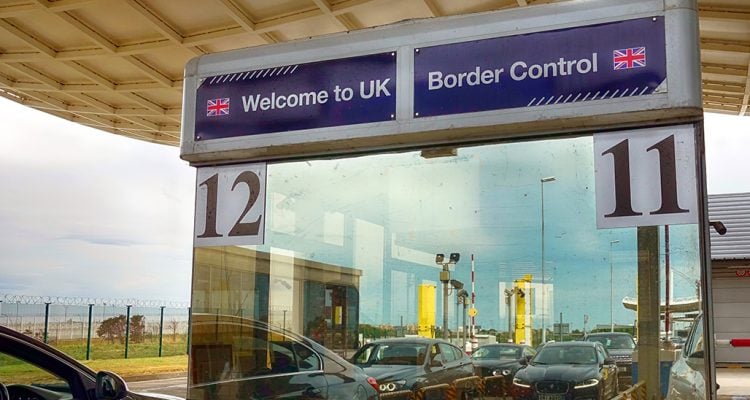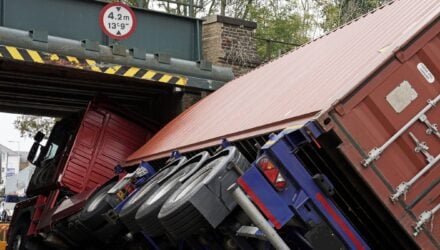As of 31st October, the UK government is set to enforce Safety and Security (S&S) declarations for all goods being imported from the European Union. This new requirement marks a significant shift in customs procedures for businesses trading with EU countries, which, until now, enjoyed simpler post-Brexit import rules. For fleet and transport managers, this change presents both operational challenges and an urgent need for adaptation. In this article, we’ll explore the implications of the new S&S declarations and provide practical guidance on how fleet managers can prepare for this change.
Safety and Security (S&S) declarations, also known as Entry Summary Declarations (ENS), are designed to provide authorities with advance information about goods being imported into the UK. These declarations are required to be submitted before goods arrive at the UK border, enabling authorities to assess potential risks related to safety, health, and security. The declarations contain key information, such as the consignor and consignee, the nature of the goods, and their transportation details.
Post-Brexit, the UK had allowed a grace period for EU imports, with the requirement for S&S declarations being delayed multiple times. However, with the 31st October deadline, all EU goods entering the UK must comply with these new regulations, bringing them in line with the rules that already apply to imports from non-EU countries.
Impact on Fleet and Transport Managers
For fleet and transport managers, the introduction of mandatory S&S declarations for EU imports represents a fundamental change in how they manage cross-border logistics. Some of the key impacts include:
- Increased Administrative Burden: The need to file S&S declarations adds an extra layer of paperwork and complexity to the logistics process. Fleet managers will need to ensure that they or their customs agents are fully aware of the required documentation and that the declarations are filed in advance of the goods’ arrival at the UK border.
- Potential Delays at Borders: Failure to submit S&S declarations could result in goods being held at the border, leading to delays in delivery times. This could be especially problematic for time-sensitive shipments or perishable goods, potentially affecting customer satisfaction and business operations.
- Additional Costs: With more administrative tasks comes the potential for increased costs, either through the need for additional staff to handle the declarations or through outsourcing to customs agents. There may also be penalties for non-compliance, further adding to the financial burden.
- Stricter Compliance Requirements: The introduction of S&S declarations means transport managers must be more vigilant in ensuring their supply chains are compliant with customs and border regulations. This will involve keeping accurate records of shipments and ensuring that the right information is submitted in a timely manner.
To ensure a smooth transition and avoid potential disruptions, fleet managers should take proactive steps to prepare for the new S&S declaration requirements:
- Understand the Requirements: The first step in preparing is to fully understand what is required in an S&S declaration. This involves familiarising yourself with the information that needs to be provided and ensuring your team is trained to handle the process. The UK government’s website provides detailed guidance on the specifics of the declarations, including the deadlines for submission.
- Use a Customs Agent or Freight Forwarder: If the process seems daunting or your business lacks the internal resources to handle the additional paperwork, consider using a customs agent or freight forwarder. These professionals specialise in customs compliance and can take on the responsibility of submitting S&S declarations on your behalf.
- Invest in Technology: Leveraging technology can help streamline the process of submitting S&S declarations. Many freight management systems and customs software solutions now include features for automating customs declarations, reducing the risk of human error and ensuring compliance with the latest regulations.
- Collaborate with EU Partners: Communication with suppliers and logistics partners in the EU will be crucial to ensure they are also prepared for the new requirements. Ensure that all parties in the supply chain are aligned and that the necessary information is shared in advance to avoid delays or disruptions at the UK border.
- Plan for Potential Delays: Even with the best preparation, the introduction of new customs procedures can result in teething issues at the border. Fleet managers should plan for potential delays, especially in the early stages of the implementation, and communicate any potential disruptions to customers.
- Monitor Government Updates: Stay informed of any updates or changes to the S&S declaration requirements by regularly checking official government sources. The UK government has been known to adjust deadlines and procedures in response to feedback from the industry, so keeping up to date is essential.
What Documentation Is Required?
To complete an S&S declaration, fleet managers or customs agents must gather specific documents and information. Some of the critical documents required include:
- Commercial Invoice:
This document outlines the transaction between the consignor and consignee, detailing the value, description, and quantity of the goods. The invoice is essential for customs to assess the correct duties and taxes. - Packing List:
The packing list provides detailed information on the packaging of the goods, including the number of boxes or pallets, weight per unit, and a breakdown of the items included in each package. This helps customs authorities verify the physical goods against the declaration. - Bill of Lading (Sea Freight) or Airway Bill (Air Freight):
For shipments by sea or air, the Bill of Lading (BOL) or Airway Bill (AWB) acts as a receipt from the carrier, confirming that they have received the goods and will deliver them to the intended destination. These documents also provide transportation details and are crucial for customs clearance. - Certificates of Origin:
These certificates are used to verify the country of origin of the goods and are sometimes necessary to determine if preferential tariff rates or trade agreements apply. - Dangerous Goods Declaration (if applicable):
If hazardous materials are being transported, an additional declaration is needed, outlining the risks and the safety measures in place. This is especially relevant for substances that could pose a risk to public health or safety. - Transit Accompanying Documents (TAD):
If the goods are moving under transit procedures through other countries before reaching the UK, Transit Accompanying Documents (TAD) are required to track the movement of goods across borders and ensure proper clearance at each stage.
The implementation of Safety and Security (S&S) declarations for EU imports on 31st October represents a major change for the logistics and haulage industry. For fleet and transport managers, the key to successfully navigating this change lies in preparation. By understanding the new requirements, leveraging technology, and working closely with customs agents and EU partners, fleet managers can ensure their operations continue to run smoothly while maintaining compliance with the new regulations.
Author: Mark Salisbury, Editor, Fleetpoint




















